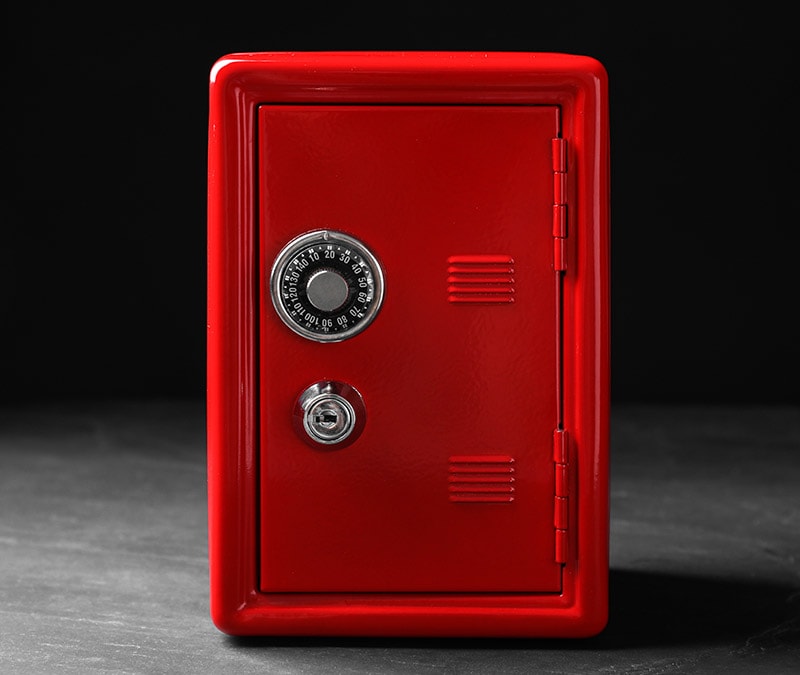What is RFID and why does it matter?
RFID is a type of Automatic Identification and Data Capture technology. Uses include contactless payments and tracking inventory.

Radio-frequency identification, or RFID, has become a useful technology for industries and consumers. If you’ve been able to track down your dog with the help of a microchip implant or checked out of the grocery store by waving your credit card at the payment terminal, you’ve put RFID to good use.
RFID technology embeds digital information in objects like passports, smart tags, and security badges. It’s used for contactless payments, tracking inventory, and starting your car with the help of a key fob.
Employers and hospitals see RFID tracking as a potential way to help control the spread of the novel coronavirus. RFID technology could help monitor social distancing, hand washing, medical equipment sterilization, and contact with patients who’ve tested positive for the novel coronavirus.
Not all uses of RFID technology are benevolent, however. If hackers access or steal the data that RFID technology captures, they could exploit it to commit crimes like financial or medical fraud or identity theft.
Here are a several things you need to know about RFID technology.
How does RFID work?
RFID is a type of Automatic Identification and Data Capture technology. AIDC technologies are used to collect and upload data that is embedded in objects.
An RFID system relies on radio waves. Electromagnetic fields transmit digital data from an RFID tag — that’s either embedded inside or attached to an object — to an RFID reader. The reader uses radio waves to send a signal to a tag and then receive data it sends back.
That data could be anything from your credit card payment information to the access code for your office building. In the COVID-19 pandemic, the data could tell hospitals which nurses and doctors were in the room with a patient who has tested positive.
What is an RFID tag?
An RFID tag is a sensor tag or small chip that’s embedded in or attached to an item.
You don’t have to see the tag — unlike a barcode. Instead, RFID tag data can be read outside of your view. An RFID reader doesn’t have to touch the chip; it can be read through radio waves.
RFID’s contactless capability makes buying items at the store and driving through tolls easier, leaving barcodes and magnetic swipe cards in the dust.
For the healthcare industry, RFID tags could eliminate the need to have direct contact with items like medical equipment while managing stock, which helps keep items sterile. RFID tags also could enable fast and efficient monitoring of stock levels.
What are the types of RFID tags?
RFID tags can be passive or active. Here’s the difference.
Passive tags are more limited in their scope because they operate over a shorter distance and transmit a smaller amount of data. Passive RFID tags work by relying on the power of a reader’s electromagnetic fields. This means they only work one way, when the radio receiver emits a radio signal.
Active tags are more powerful because they can be self-powered by on-board batteries. Active RFID tags are able to transmit a larger amount of data over a greater distance — and can do this at any time.
The range of an RFID tag depends on what’s called its frequency band. Passive tags operate in low and high frequencies, with shorter ranges from a few inches to a few feet. Active tags operate in ultra-high and microwave frequencies, with larger ranges that can cover 25 to more than 30 feet.
What products contain RFID tags?
RFID tags are being embedded into more and more products to enable the syncing of digital information for functions like inventory tracking, supply chain management, data sharing, making payments, and granting access. Here are some of the possible products.
- Access keys
- Apparel
- Automobiles
- Car keys
- Credit cards
- Debit cards
- Pet ID tags
- Electronic passports
- Enhanced driver’s licenses
- Government-issued ID cards
- Implanted medical records and sensors
- Library books
- Medical equipment
- Packages and inventory
- Personal IDs
- Pharmaceuticals
- Security badges
- Smart tags
- Speed pass keychain payment devices
What is RFID used for?
RFID is useful for inventory and supply-chain management. Not only are RFID tags able to hold more information than bar codes, but they also can’t be damaged like ripping or smearing. That’s one reason suppliers use them.
Public transportation and tolls use active RFID technology to assist their access and payment systems.
RFID technology also helps keep track of pets and livestock, with microchips implanted just under their skin. The technology can be critical for doctors who implant medical devices in their patients.
RFID chip technology in the form of “tap and go” payments can also be used in credit cards.
What is RFID skimming?
RFID technology can leave you vulnerable to data theft. RFID technology produces readable data. That means cybercriminals may be able to read the digital data embedded in an item.
RFID technology has made digital pickpocketing possible. All that’s needed is the appropriate RFID reader.
How does this work? Your credit card has that built-in RFID chip that sends the card’s information so you can make contactless payments. Thieves could use this same wireless technology for RFID skimming — grabbing information off of your credit card.
Criminals sometimes insert skimming devices inside credit card and ATM terminals. When you go to pay or withdraw money, they’re able to copy data from your payment cards.
If someone is able to access personally identifiable information like your name, credit card number, and expiration date, along with other personal data, they may be able to commit frauds such as identity theft.
Where does RFID skimming occur?
You might be in an airport buying a cup of coffee. A hacker bumps into you in the checkout line, letting his RFID reader come into close contact with your passport and credit card. It could be that simple. RFID readers don’t necessarily have to come into direct contact with your items that contain RFID technology.
Here’s another consideration. Some smartphones have built-in NFC readers — short for near-field communication — that also can scan your payment cards.
RFID skimming can happen in a lot of places where you might carry payment cards, including these.
- Airports
- ATMs
- Banks
- Buildings like apartment complexes or offices that require security keys
- DMVs
- Grocery stores
- Hospitals
- Libraries
- Parking garages
- Retail stores
How can you protect yourself from RFID skimming?
There are steps you can take to help protect your information from RFID skimming. Here are four tips that can help.
1. Use an RFID blocker
You might think of an RFID blocker as a data shield. Companies have created smart wallets, card holders, passport cases — even shirts and jeans — that contain protective, metal materials that, in some cases, could help block the transmission of radio waves from an RFID reader. While some do-it-yourself shields — cards wrapped in thick layers of metal like aluminum foil — may interfere with electronic signals, their efficacy isn’t a sure thing.
Here are a few ways to protect against RFID skimming.
- Implement access controls. Encryption or other access controls like biometrics can help ensure hackers don’t gain access to your data.
- Beware of strange behavior. RFID skimming doesn’t require coming into direct contact with an item like your credit card, but it still depends on proximity. If someone keeps trying to get closer to you in a checkout line or is exhibiting strange behavior, be wary.
- Set strong passwords. It’s always wise to set strong passwords: unique, complex combinations of at least 12 characters that include uppercase and lowercase letters, symbols and numbers. Another option: Use long passphrases that would be hard to guess, but possibly easier for you to remember.
What can you do if you become a victim of RFID skimming?
If you find you’re the victim of RFID skimming, there are things you can do to help protect your information, including these.
Call your credit card company. If your credit card data has been skimmed, you’ll want to cancel that card number and account and set up a new one. Remember to monitor your accounts and credit reports for additional suspicious activities.
Call your bank. If your debit card has been skimmed, contact your bank immediately. Your bank will help you get a new account number and card. Be sure to check your original account to make sure no money has been stolen.
Check your accounts. If personal information has been compromised, thieves may try to access other accounts you hold, pretending to be you.
Contact the Federal Trade Commission. If you know you’re a victim of RFID skimming, notify the FTC so they have a record about the scam. The FTC can also offer tips to help protect you against fraud.

Cyber threats have evolved, and so have we.
Norton 360™ with LifeLock™, all-in-one, comprehensive protection against viruses, malware, identity theft, online tracking and much, much more.
Try Norton 360 with Lifelock.
Editorial note: Our articles provide educational information for you. Our offerings may not cover or protect against every type of crime, fraud, or threat we write about. Our goal is to increase awareness about Cyber Safety. Please review complete Terms during enrollment or setup. Remember that no one can prevent all identity theft or cybercrime, and that LifeLock does not monitor all transactions at all businesses. The Norton and LifeLock brands are part of Gen Digital Inc.





Want more?
Follow us for all the latest news, tips, and updates.